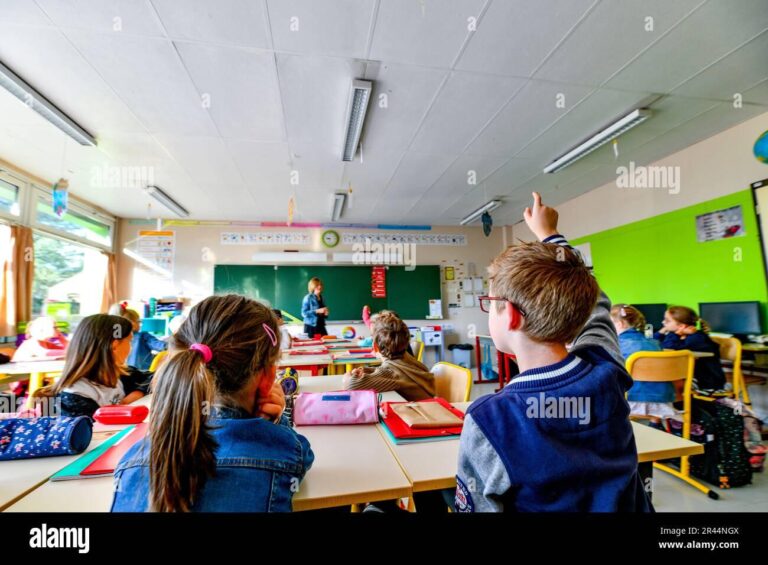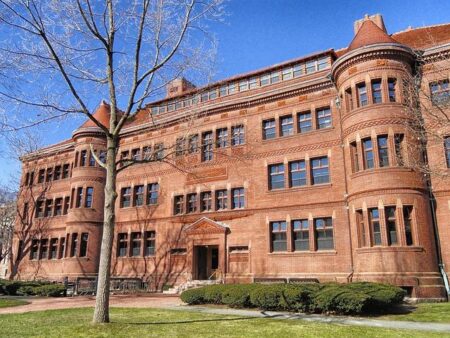In 2022, the landscape of primary education in France reflected notable trends and shifts in student enrollment, according to recently released data from Statista. As the country continues to prioritize early education, understanding the number of students attending primary schools offers crucial insights into demographic changes, educational policies, and resource allocation. This article delves into the latest statistics, exploring how these figures compare to previous years and what they reveal about the state of primary schooling across France.
Primary School Enrollment Trends in France Reveal Shifting Demographics
Recent data indicate notable shifts in the distribution of primary school enrollments across France, reflecting broader demographic changes. Coastal regions and urban centers such as Île-de-France have seen a steady rise in student numbers, driven predominantly by migration patterns and younger populations settling in these zones. Conversely, many rural areas are experiencing a decline, raising concerns about the sustainability of local schools and the allocation of educational resources.
Key factors influencing enrollment trends include:
- Growing urbanization and the consequent concentration of families in metropolitan areas
- Increased birth rates in certain regions contributing to higher student populations
- Migration of families seeking better educational and economic opportunities
| Region | Enrollment Change (2020-2022) | Notable Trend |
|---|---|---|
| Île-de-France | +4.2% | Significant urban growth |
| Brittany | -1.5% | Rural decline |
| Nouvelle-Aquitaine | +0.8% | Moderate growth near cities |
Analyzing Regional Disparities in Student Numbers Across French Primary Schools
Regional variations in student populations within French primary schools reveal significant demographic and socio-economic trends. Urban centers such as ├Äle-de-France and Auvergne-Rh├┤ne-Alpes continue to report the highest enrollment figures, fueled by larger metropolitan populations and steady birth rates. Conversely, rural and less densely populated regions like Corsica and Bourgogne-Franche-Comt├® register notably lower student numbers, reflecting migration patterns and local economic disparities that influence family sizes and schooling demand.
Key factors contributing to these disparities include:
- Population density and urbanization levels
- Economic opportunities affecting young families
- Regional birth rate fluctuations
- Local infrastructure and school accessibility
| Region | Number of Primary Students (2022) | Percentage Change from 2021 |
|---|---|---|
| Île-de-France | 850,000 | +1.5% |
| Auvergne-Rh├┤ne-Alpes | 610,000 | +0.8% |
| Bourgogne-Franche-Comt├® | 210,000 | -0.9% |
| Corsica | 25,000 | -1.2% |
Implications of Enrollment Changes for Education Policy and Resource Allocation
Shifts in student enrollment numbers across regions and provinces of France directly influence critical decisions in education policy. Areas experiencing rising enrollment may prompt authorities to prioritize the expansion of school infrastructure, as well as the recruitment of additional teaching staff to maintain quality education standards. Conversely, districts with declining student populations might consider consolidating resources or repurposing existing facilities to avoid underutilization. Policymakers must balance these shifting demographics with long-term national education goals, ensuring equitable access to learning opportunities while managing budgetary constraints effectively.
- Funding Allocation: More students require increased funding for materials, technology, and support services.
- Teacher Distribution: Recruitment and training efforts must align with geographic enrollment patterns.
- Infrastructure Planning: New schools or renovations tailored to population growth hotspots are essential.
- Curriculum Adaptation: Potential adjustments to accommodate diverse student needs based on changing demographics.
| Region | Enrollment Change | Policy Focus |
|---|---|---|
| Île-de-France | +5% | Infrastructure expansion and tech integration |
| Brittany | -3% | Resource consolidation and staff redistribution |
| Provence-Alpes-C├┤te d’Azur | +2% | Teacher hiring and curriculum updates |
Recommendations for Addressing Capacity Challenges and Enhancing Classroom Experience
To effectively mitigate classroom capacity challenges in French primary schools, educational authorities should implement flexible scheduling and optimize resource allocation. This includes expanding the use of multi-purpose learning spaces and promoting blended learning models where digital platforms complement traditional teaching. Additionally, recruiting and training support staff to assist teachers can alleviate pressure on classroom dynamics while improving individual student engagement.
Enhancing the classroom experience requires a holistic approach centered on both infrastructure and pedagogy. Key recommendations include:
- Smaller class sizes: Limiting the number of students per class to foster better teacher-student interaction and more personalized attention.
- Improved learning environments: Upgrading classroom facilities with ergonomic furniture, better lighting, and modern technology to create a stimulating atmosphere.
- Professional development: Equipping teachers with innovative instructional strategies tailored to diverse student needs and larger cohorts.
| Strategy | Expected Impact |
|---|---|
| Flexible scheduling | Reduced overcrowding |
| Technology integration | Enhanced engagement |
| Smaller class sizes | Individualized learning |
| Teacher training | Improved outcomes |
Insights and Conclusions
In summary, the data on the number of students enrolled in primary schools across France in 2022 offers valuable insights into the country’s educational landscape. Monitoring these figures is crucial for policymakers, educators, and stakeholders as they navigate challenges and plan for the future of the nationŌĆÖs education system. As demographic trends continue to evolve, keeping a close eye on school enrollment numbers will remain an essential part of ensuring quality education and resource allocation in France.




